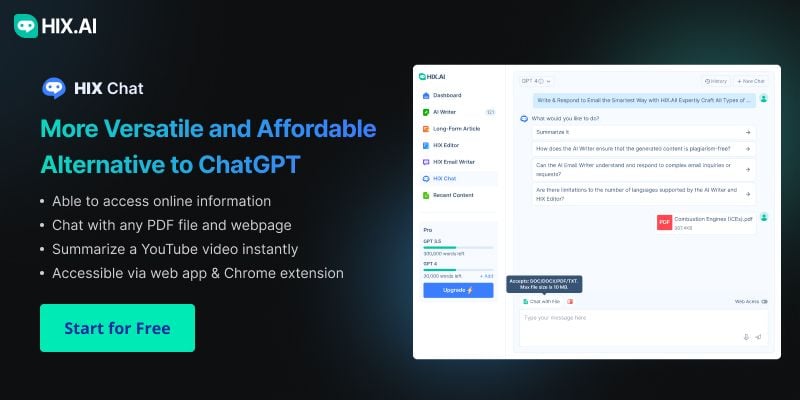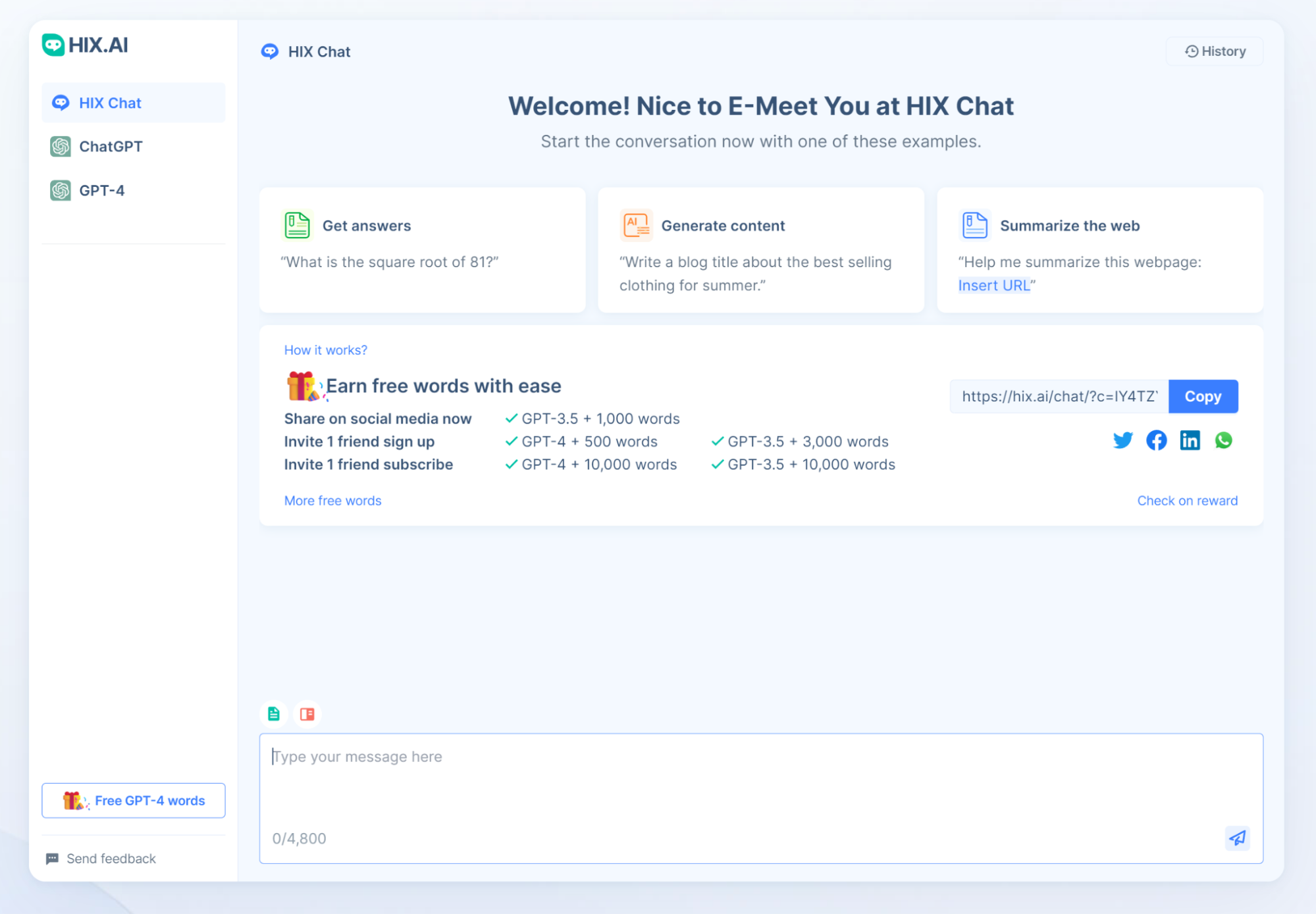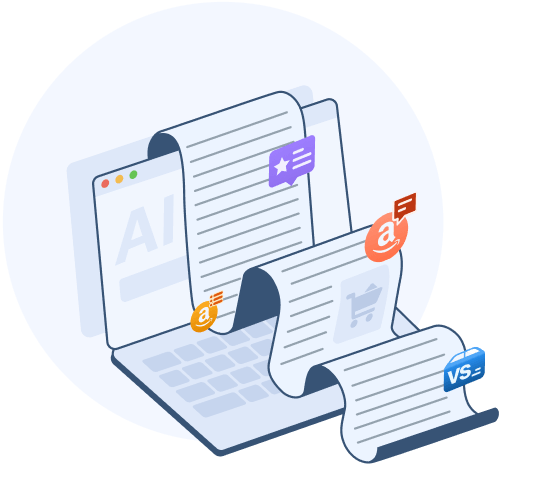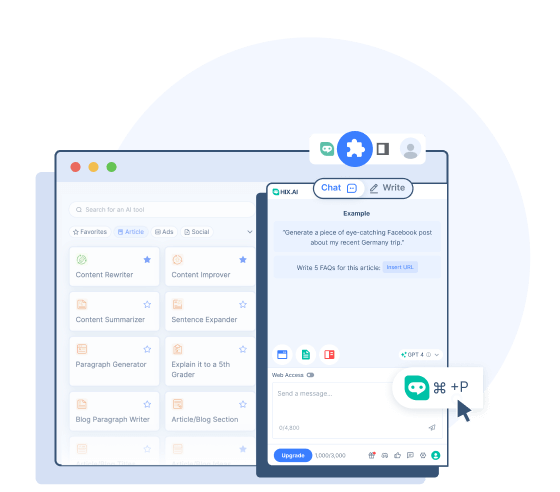Even though ChatGPT has been around for a while, a lot remains unknown about the tool. You might be familiar with the basics – the platform can answer questions and solve problems while engaging in natural conversations.
But what about the name of this software? More specifically, what does GPT stand for in ChatGPT? Read on to find out!
Experience ChatGPT With No Login Required
Before we unpack the significance of GPT in ChatGPT, engage with the dynamically intuitive and no-login required chatbot, ChatGPT, yourself.
What Is the Meaning of GPT in ChatGPT?
Let’s answer the central question right away. GPT stands for “generative pre-trained transformer.” This phrase tells you how the tool works. More specifically, it describes how the platform responds to your input and generates replies.
Once you type in your request or question, the software relies on pre-trained data to provide an answer. It sifts through huge clusters of information to find suitable solutions, but this doesn’t mean the technology is slow. On the contrary, it can give you detailed answers to complex issues within seconds.
The secret lies in certain machine learning algorithms. These algorithms comb data to find patterns that match the criteria in your request or question.
The GPT acronym appears in many different forms. For example, the most common example of the GPT technology is GPT-3. You can also find GPT-3.5, which features an enhanced fine-tuning process and higher speeds.
Then there’s GPT-4. It’s part of the ChatGPT Plus plan, which costs around $20 per month. If you buy this plan, you unlock the cutting-edge GPT-4 engine, which is even more reliable than GPT-3.5. On top of that, it can describe images, generate captions, and talk at length about particular topics. Some responses are even longer than 20-25K words.
It’s also worth mentioning that the GPT model is trained on a rewards-based system. Here’s how it works:
- The developer trains the tool using generic information.
- The model masters generic data and receives fine-tuned information that lets it complete specific tasks.
- The developer feeds ChatGPT with the norms of human conversations, so it can appear more natural and apply natural language processing (NLP).
- ChatGPT provides answers and solutions depending on the input.
- If the answer is satisfactory, the tool receives a thumbs-up, which is a form of reward that signals the software is on the right track. A thumbs-down means that there’s something wrong, indicating that ChatGPT should look for a different solution.
You can also play a pivotal role in training the model. By ranking the responses with a thumbs-up or thumbs-down, you tell the software whether you’re happy with the response or if it needs some fine-tuning to provide a better answer.
What Can You Use ChatGPT For?
With the GPT acronym deconstructed, we can move on to a related topic. As previously discussed, the GPT model relies on pre-trained data to answer questions. This lays the groundwork for various applications, which means the tool can be beneficial in some ways:
Benefit No. 1 – Helping Impaired Students Learn and Making Professors’ Jobs Easier
Not everyone has the same learning opportunities. Students with dyslexia, ADHD, or impaired vision need help to understand course materials. Plus, they might not be able to use textbooks to find answers.
ChatGPT can help. It acts as an online textbook with information from pretty much any field. Students can use the software to solve problems without the need to type in the questions. Instead, they need only utilize the built-in voice commands to instruct the app. This allows those with vision problems to communicate their questions quickly and accurately.
Besides voice commands, you can enter your input via images. Simply upload a picture of what you want to talk about. ChatGPT will analyze the picture and discuss various details, such as what it represents and what it can be used for.
Additionally, the platform works great as a language translator. It’s available in dozens of languages, making it suitable for foreign students.
On top of that, ChatGPT can make all the difference for professors. For instance, they can use the tool to create lesson plans and generate different types of quiz questions, like “fill-in-the-blank” or true-or-false questions.
Here are a few other ways ChatGPT can help educators:
- Provide tips on how to keep students engaged and accommodate learners with disabilities
- Generate educational resources to enhance course materials
- Analyze students’ work
- Grade papers and give feedback
Benefit No. 2 – Improves Customer Support
Many companies are looking to automate their technical support, and ChatGPT seems like an excellent choice. It enables businesses to set up virtual chatbots to answer questions quickly. If some questions are out of the tool’s scope, it can redirect the user to a human operator to boost customer experience and decrease wait times.
Benefit No. 3 – Generates Solid Content
ChatGPT is a versatile tool mainly because it can deliver content on a wide range of topics. Whether you need a long-form article about finance or a series of emails about life coaching, simply feed the software with your input and let it do the rest.
What Are the Limitations of ChatGPT?
Knowing what GPT is and what it does is great, but you should hear the other side of the story to get a full picture. Here are the biggest limitations of this tool:
Limitation No. 1 – Repetition
ChatGPT is great for writing short content, but it can struggle with long-form texts. The longer the article, the more likely ChatGPT is to repeat previous points. This repetition indicates a struggle to maintain the unique content flow or diversify the information as the length of the article expands.
Limitation No. 2 – Inaccuracies and Bias
If you rely on ChatGPT, you’ll need to fact-check every answer since it’s known for inaccuracies. Furthermore, it can be biased when discussing many topics, giving you a skewed image of reality.
For instance, if you’re asking the tool to comment on a political event, it may use social media as the source material. As you may know, some social media discriminate against left-leaning views in favor of conservative ones, and vice versa. This can make ChatGPT’s answers less objective.
Is There a ChatGPT Alternative?
In your quest to unravel the meaning of GPT, you’ve discovered that ChatGPT isn’t perfect. You may have already started your hunt for an alternative. Look no further than HIX Chat.

This full-scale AI tool is more flexible, accurate, and less biased than ChatGPT. It uses the most recent data and supports 50+ languages to streamline your workflow or learning opportunities. Plus, the chatbot can summarize pretty much anything, including research papers, books, and even YouTube videos.
You can even interact with the GPT-3.5 and 4-powered chatbot in different ways. Rather than simply typing in your prompts, feel free to upload a PDF and ask HIX Chat to answer questions based on the document.

Finally, HIX Chat is available pretty much wherever you go. It works as a Chrome or Edge extension and fully functional web app.



